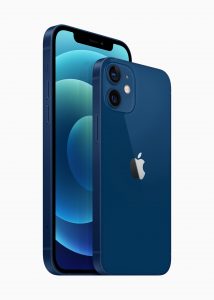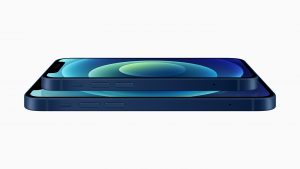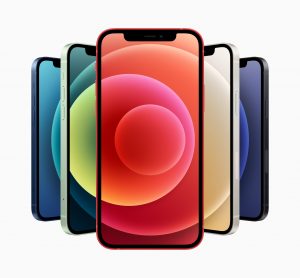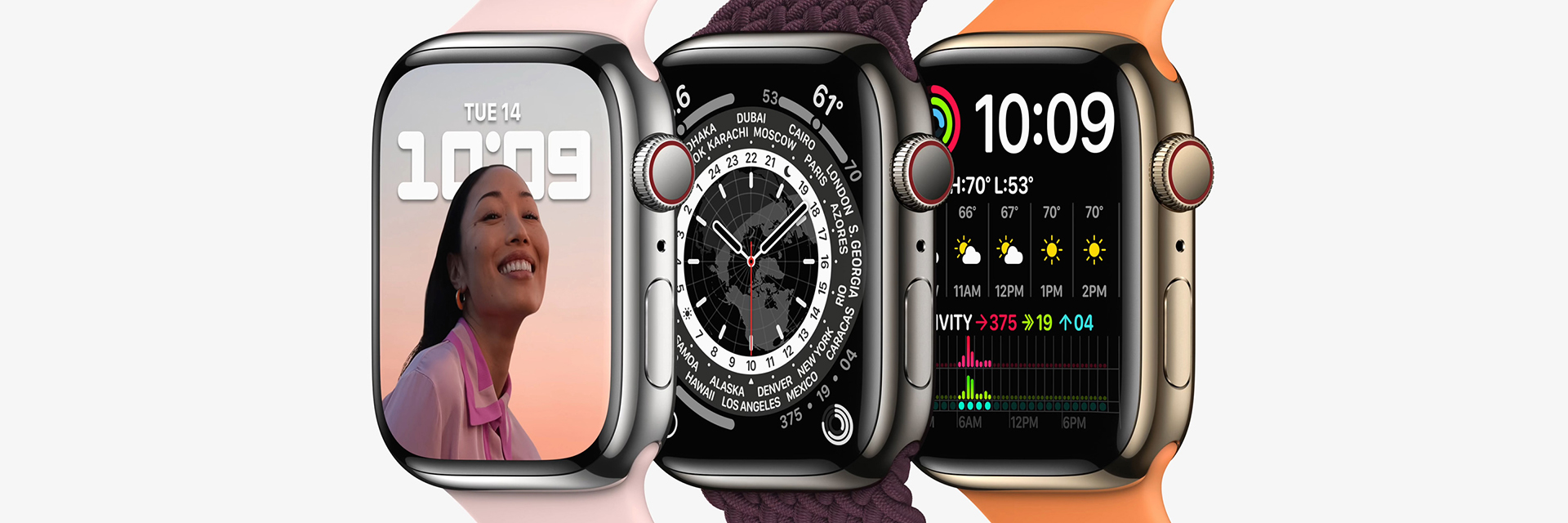After a month delay from their usual announcement date, Apple has released the 12th version of their iPhone smartphone line. This time with 5G and also an option of a physically smaller device known as the iPhone 12 mini. The newly designed iPhone 12 models feature expansive edge-to-edge Super Retina XDR displays for a brighter, more immersive viewing experience, and a new Ceramic Shield front cover, providing the biggest jump in durability ever on iPhone. The Apple-designed A14 Bionic, the fastest chip in a smartphone, powers every experience on iPhone 12, and coupled with an advanced dual-camera system, delivers meaningful new computational photography features and the highest quality video in a smartphone. iPhone 12 models also introduce MagSafe, offering high-powered wireless charging and an all-new ecosystem of accessories that easily attach to iPhone.

iPhone 12 in Green. Source: Apple.
It was all announced in Apple’s over the top online presentation which screamed “look at us and our fortress campus”. In an empty Steve Jobs Theatre, Tim Cook unveiled the first ever 5G Apple product along side Greg Joswiak, a Senior Vice President of Apple Worldwide Marketing.
“The arrival of 5G marks the beginning of a new era for iPhone … we’re once again pushing the boundaries to deliver incredible computational photography advancements, Super Retina XDR displays, and the biggest leap in durability in iPhone history with the new Ceramic Shield front cover. Available in two great sizes, iPhone 12 and iPhone 12 mini take design to a new level in a new form factor that’s as beautiful as it is durable, and makes it easier than ever for customers to find the perfect iPhone to fit their lifestyle.”
– Greg Joswiak, Apple’s senior vice president of Worldwide Marketing

iPhone 12 in Blue. Source: Apple.
Apple thinks you can reach up to 4Gbps… but that is clearly a scenario where the world population has taken a break from using their phones, you’re standing on the 5G tower itself and it’s a moonless night. In reality, the challenge Apple will need to face is the increased need for line of sight with 5G. It looks like Apple has a backup plan as the new iPhone will ‘intelligently’ lower itself to 4G speeds when the phone “isn’t demanding 5G speeds” as Tim Cook put it. One could assume being in an area with poor 5G coverage falls under that category.

Super Retina XDR. Source: Apple.
The design of the new iPhone 12 takes cues from the iPhone 4, especially those solid edges. The regular iPhone will be 6.1-inches while the iPhone 12 mini will be a 5.4-inch palmable phone. A ceramic shield process has made it 4 times less likely to crack compared to previous generations, or so claimed.
Both phones will have what are called ‘Super Retina XDR’ displays that are supposed to support a system wide colour management with a 2000000-to-1 contrast ratio for true blacks, and HDR10 for high-definition video, high photo detail, and nearly twice the brightness of their iPhone 11.
Apple has sent it to the splashzone. iPhone 12 and iPhone 12 mini have an IP68 rating for water resistance up to 6 metres for up to 30 minutes, and are protected against everyday spills, including coffee and the occasional can of Pasito.

MagSafe Wallet. Source: Apple.
We can report the dates around the MagSafe Charger, Leather Wallet with MagSafe, and iPhone 12 Silicone Case and Clear Case. They will be available beginning Friday, 16 October 2020. iPhone 12 Leather Case will be available beginning Friday, 6 November 2020. MagSafe Duo Charger and Leather Sleeve will be available eventually.
All that is nice, but you’re here about the camera.

Shot on iPhone 12. Image source: Apple.
iPhone 12 and iPhone 12 mini deliver what they call ‘computational photography features’ enabled by A14 Bionic and a new-to-Apple dual-camera system, bringing a decent camera experience in photography and video. For your cash, you will get an Ultra Wide camera and a new Wide camera with an ƒ/1.6 aperture, providing 27% more light for low-light photos and videos – Night mode and faster-performing Deep Fusion now on all cameras — TrueDepth, Wide, and Ultra Wide — for improved photos in any environment. Customers will expect brighter pictures and better contrast for photos shot in low-light settings with Night mode compared to previous attempts, and more texture and less noise in Deep Fusion photos although this is not a sensor at work but software.

Aluminium Finishes. Source: Apple.
iPhone 12 and iPhone 12 mini will be available in 64GB, 128GB, and 256GB models in blue, green, black, white, and red, starting at RRP A$1,349 inc. GST and RRP A$1,199 inc. GST, respectively. Customers can also get iPhone 12 from RRP A$969 with trade-in and iPhone 12 mini from RRP A$819 with trade-in.






